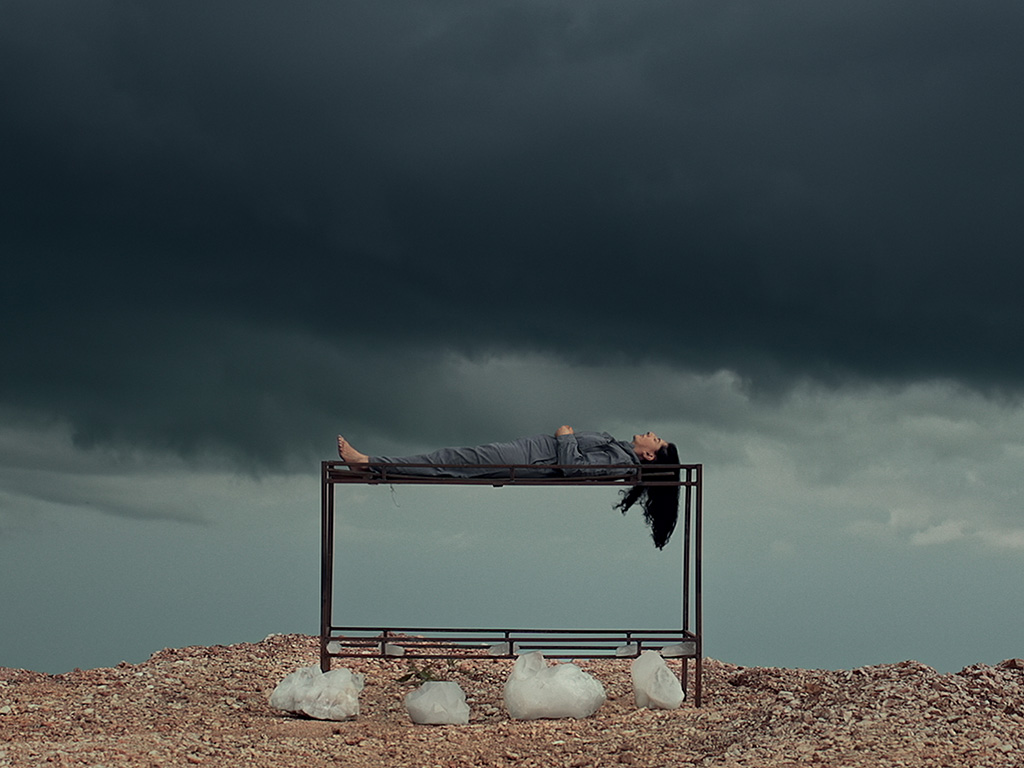
In her 2016 memoir Walk Through Walls, the celebrity performance artist Marina Abramović cracked a joke. Question: “How many performance artists does it take to change a lightbulb?” Answer: “I don’t know – I was only there six hours.” This neat drollery encapsulates both the conundrum that underlies almost all performance art – it takes so long – and shows a welcome flash of self-awareness from a woman who is rarely mistaken for a ray of sunshine.
The stock-in-trade of Abramović’s long career – she is now 76 – is endurance mixed with pain. This was exemplified in Naples in 1974 when she performed a work called Rhythm 0 in which she laid out 72 objects, including a feather, honey, a scalpel and a pistol with one bullet in it, and invited the audience to do whatever they wanted with her. “I am the object,” she said, “I take full responsibility.” For six hours of escalating unpleasantness she was variously caressed, assaulted, groped, her clothes sliced off her, and her neck cut so someone could suck her blood.
At the end one audience member put the loaded gun in her hand, made her point it at her own head and closed her finger on the trigger. It was only then that another onlooker stepped in to grapple the gun away. Abramović learned that “if you leave it up to the audience, they can kill you”, but did not say was whether she would have pulled the trigger and so allow the performance to reach its ultimate, if fatal, conclusion.

What Abramović seeks, she says, is an “energy dialogue” between her and her audience. She wants to turn watchers into collaborators – harmers or helpers, but not passive witnesses – who make work with her. Visitors to the major retrospective of her career at the Royal Academy (RA) – the first the institution has given to a female artist – now have a chance to experience this dubious pleasure in person. While the RA is too decorous to invite murder in its galleries, even in the name of art, various other of her confrontational live pieces are being recreated by artists trained at her Marina Abramović Institute. A doctor, psychologist and nutritionist are on hand, for the performers, though possibly for more sensitive visitors too.
To move through the galleries, you need to squeeze sideways between a naked man and woman – take your pick of whose floppy bits you have to brush against (although the timid can swerve the ordeal and use a separate entrance) – with a background soundtrack of primal screaming and drumming, to find a naked woman lying under a skeleton, another spread-eagled like Leonardo’s Vitruvian Man but high on an illuminated wall and supported solely – and pelvically – by a bicycle saddle, alongside films of Abramović’s old performances and innumerable projections of her face.
There is an unexpected consequence to this. Before examining Abramović’s motivations and tenacity her virtual presence has the effect of forcing viewers to ponder what the performers, her cat’s paws, are thinking as they suffer for someone else’s art. They are committed for sure but it is doubtful whether their threshold for exposure and pain is as high as Abramović’s. True, they volunteered, but they didn’t conceive of the works and nor will the riches or fame – collaborating with Debbie Harry, Lady Gaga and Jay Z, modelling for Givenchy, giving Ted talks, wading through the gallerists and curators prostrate at her feet – be theirs.

Abramović needs buy-in from the viewer too. There are more than 220 images of her in the exhibition and only one fleeting smile among them. The rest show her expressionless or in a trance, slapping her former partner Ulay and being slapped in return, the pair screaming at one another up close and full-throttle, her stabbing between her fingers with a knife, lying immobile on a bier on a hilltop, or ecstatic as if in a religious painting. The visitor is required to take each and every incarnation as seriously as she does – a feat of endurance on their part.
The hardy or curious can also try out a little of what it is like to be the performer by lying on a bench with a stone headrest or propping one’s forehead against a curved and polished marble block and staring at the wall. Most last minutes at most and the meditative state Abramović manifests does not come.
There is something of the cult to all this, or a mutually abusive relationship. Abramović needs an audience and that audience, by watching with grisly fascination, becomes complicit. Even 50 years on, looking at stills of Rhythm 0 is an uncomfortable, borderline tainting experience. Her catalogue of self-harm provokes a reaction, but to what end is less than clear. If this is profundity, it is a joyless one.
This article appears in the 27 Sep 2023 issue of the New Statesman, The Right Power List





